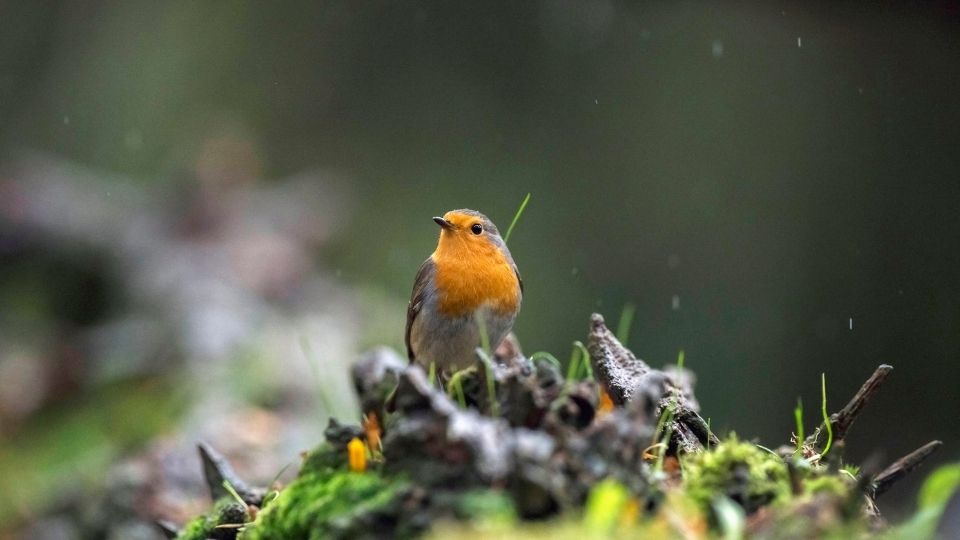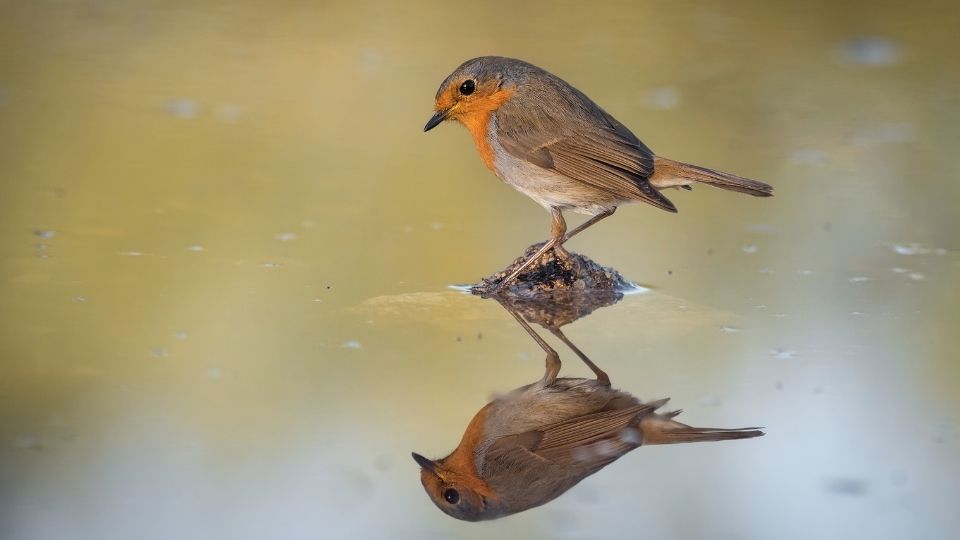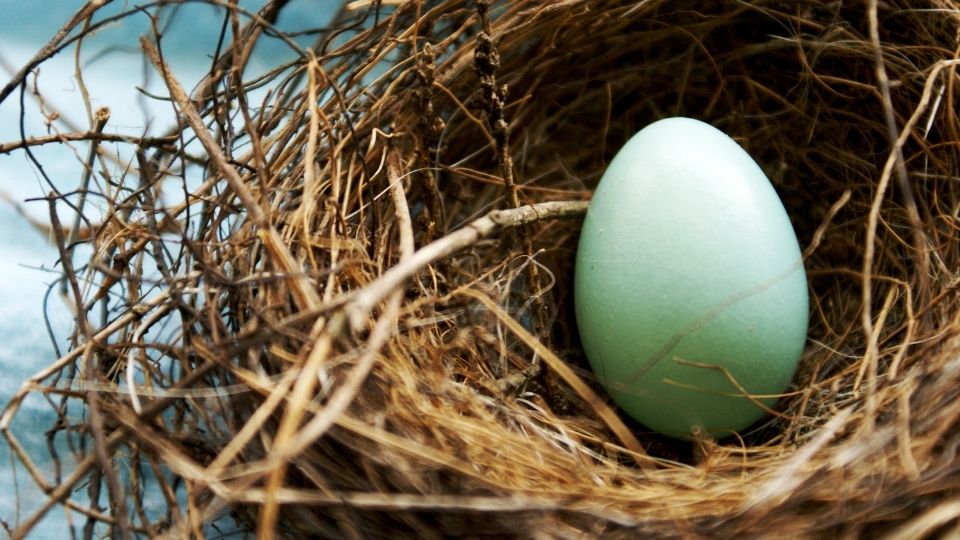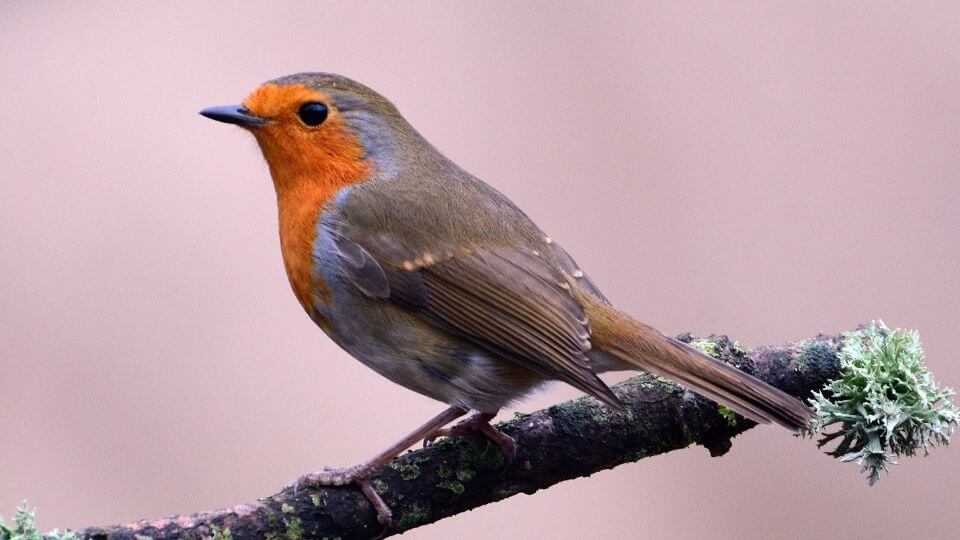While some songbirds mate for the duration of their lifetime, American robins do bond but only for the period during their mating and nesting season. For a robin couple, a male robin offers support when the female robin incubates robin eggs. Each breeding season can produce 2 to 3 broods.
Do Robins Mate for Life?
No, robins do not mate or life.
Robin breeding pairs typically remain together only during the breeding season, which can include nesting up to three broods of offspring. However, the robins will return to their previous territory after spring.
These breeding pairs will still end up together the following year since most robins often return to the very same breeding ground the following year. There is a higher chance that the same two robins will mate with the same partner for the next season.
In the video below, we rounded up 10 little known facts about robins!
When Is a Robin’s Mating Season?
American robin’s breeding seasons begin at the onset of spring, from around March to June. Some robins have been recorded nesting even as early as January.
At the beginning of the typical breeding season, the female robins will start identifying mating partners and also building a nest. This nest will be used for the breeding season and not used again.
Robin eggs are internally fertilized and laid within a fortnight. Female robins will build the nest in preparation for the brood.

How Long Do Baby Robins Stay in the Nestling Stage?
Robin nestlings will typically stay in the nest for 13 days.
The young robins are born with their eyes closed, and after 5 days will open their eyes. The chicks take about five days to learn to eat solid food like insects.
During the altricial period, the parents provide support and security for the chicks.
Within the first week, baby robins feed on regurgitated, partly digested food from their mother’s beak, but after the first week, robin chicks feed on earthworms and other invertebrates.
Nestlings receive all the necessary nourishment from their parent bird. After the nestlings evolve into fledglings, the female robin will begin fitting their nest for a new brood of eggs.
When Do Young Robins Start the Fledgling Stage?
The fledgling stage for robin chicks starts immediately after the nestling stage, ending within a fortnight from birth.
During this period, the birds begin to develop characteristic features for their species and gain the potential capacity for independent flight. This is a critical stage for robin birds, as they are the most vulnerable during this time.
It takes two weeks before the chicks begin fledgling and independently organize and direct themselves as the mother bird prepares room and space for the next brood. It takes another 13-15 days for the birds to develop strong wings and gain flying ability.
After the first year, the young birds are mature enough to begin mating in the immediate following spring season.
American ribbons start mating shortly after the winter season, during the onset of the spring season. The mating period lasts from late April through to early August.
The birds distinctively lay eggs every spring season, and the robin female incubates on the eggs for 13-14 days.
Male robins also sit on the eggs. However, this bird often hangs around the nest to provide security, support, and food at times for the female robin.
A robin bird lays up to three sets of broods annually; however, with low survival rates for the fledging, weather and biological indifference increase the mortality rates of the broods.
Baby birds are often born altricial and require prolonged parental care for development and growth.

Do Robins Return to the Same Nest Every Year?
American robins rarely return to the same nests of breeding and mating yearly.
This is because robins are one of the first specie of thrush birds to lay eggs during all seasons. This enables three sets of family settings annually and promotes constant location changes.
If robins return to the nest, they only reuse it as a foundation to rebuild a new nest.
How Is a Robins Nesting Site Built?
Female robins are the sole builders of the nests for robin chicks. The nests are made of thatched grass, dead leaves, and moss patched fixe in lowly positions from the ground.
The nests are situated in quiet surroundings and are lined with hair to support the nestlings when hatched. It takes the female robin 2-6 days to fully prepare the nest with minimal support from the male robin, offering security and company to the female robin-in action.
A robin nest is sufficiently constructed to cushion the robin eggs and protect the chicks from cold. A thrush bird’s nest is lined with grass straw to enhance the camouflage of the nest and its environment to promote security.
The birds prefer setting their nest in fruiting trees like crabapple and cherry.

What Color Are Robins Eggs?
Robin birds lay distinctively fertilized blue eggs that are biliverdin filled. Robins egg’s persistent blue color indicates the health levels of robin hatchlings.
This characteristic color is a crucial feature for robin adults to measure and calculate the survival rates of each egg laid. The female adult robin at times eats the eggs shells.
How Long Do Robins Live For?
Adult robins often live up to 2 years in the wild.
This bird species has a lifespan of about 13 months on average. This is mainly due to the birds’ high mortality rates among robins within their first year.

